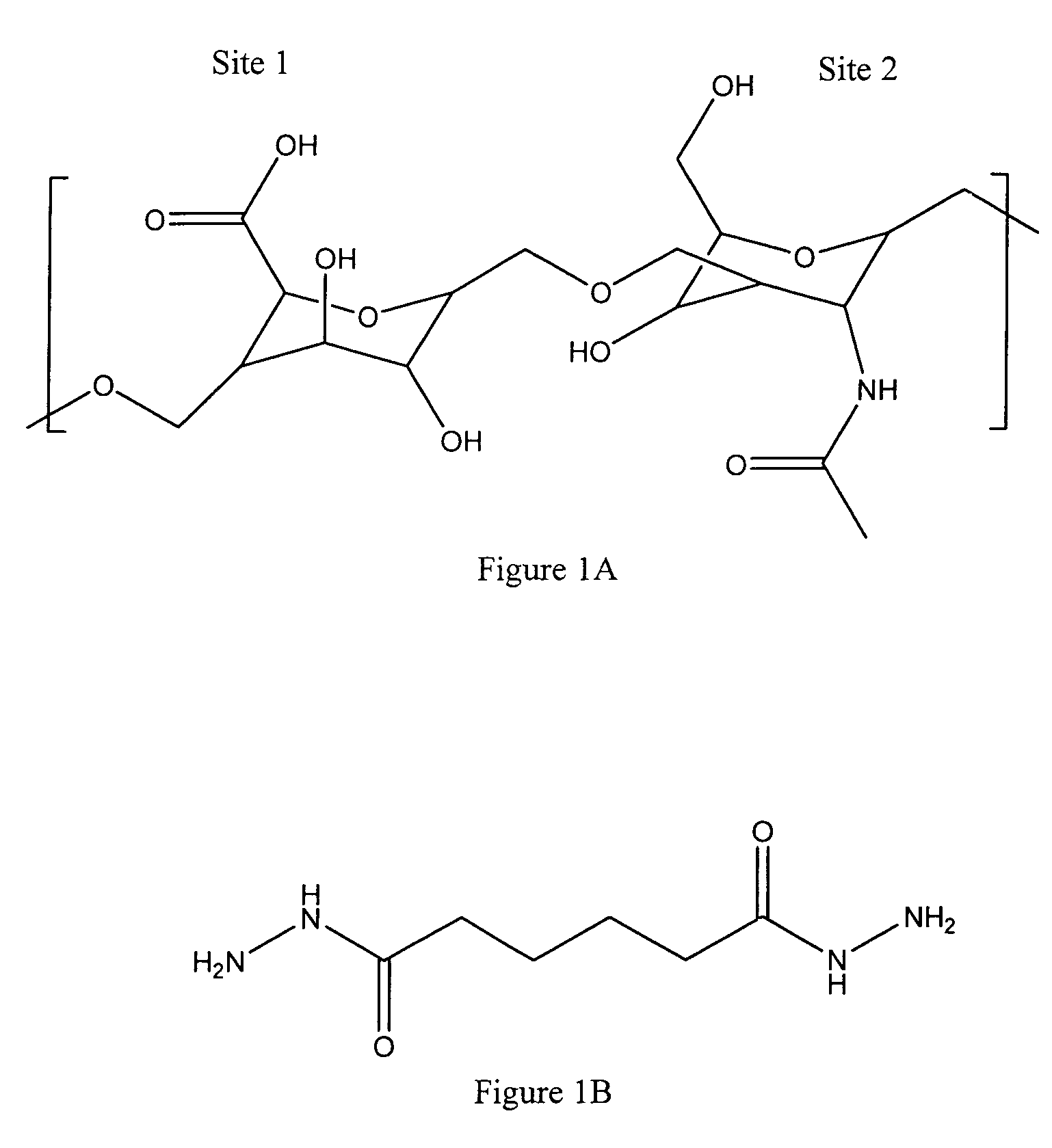Hyaluronic acid based copolymers
a technology of hyaluronic acid and copolymer, which is applied in the direction of prosthesis, drug composition, extracellular fluid disorder, etc., can solve the problems of acute occlusion, persistent occurrence of restenosis, and plagued stents
- Summary
- Abstract
- Description
- Claims
- Application Information
AI Technical Summary
Problems solved by technology
Method used
Image
Examples
example 1
[0077]A stent can be coated according to the procedure and in the configuration as specified below:
[0078]Primer layer: 100 μg of PLA;
[0079]Matrix drug layer: 500 μg of poly(lactic acid) (PLA) and everolimus (weight ratio of PLA to everolimus can be 1:1, for example); and
[0080]Topcoat layer: 300 μg of HA conjugate blended with PLA (weight ratio of HA conjugate to everolimus can be 1:1, for example).
example 2
[0081]A stent can be coated according to the procedure and in the configuration as specified below:
[0082]Primer layer: 100 μg of PLA;
[0083]Matrix drug layer: 500 μg of PLA and everolimus (weight ratio of PLA to everolimus can be 1:1, for example); and
[0084]Topcoat layer: 300 μg HA conjugate blended with PEGlyated PLA (e.g. triblock PLA-PEG-PLA) (weight ratio of HA conjugate to PEGlyated PLA can be 1:1, for example)
example 3
[0085]A stent can be coated according to the procedure and in the configuration as specified below:
[0086]Primer layer: 100 μg of PLA;
[0087]Matrix drug layer: 500 μg of PLA and everolimus (weight ratio of PLA to everolimus can be 1:1, for example); and
[0088]Topcoat layer: 300 μg pure HA conjugate.
PUM
| Property | Measurement | Unit |
|---|---|---|
| molecular weight | aaaaa | aaaaa |
| molecular weight | aaaaa | aaaaa |
| molecular weight | aaaaa | aaaaa |
Abstract
Description
Claims
Application Information
 Login to View More
Login to View More - R&D
- Intellectual Property
- Life Sciences
- Materials
- Tech Scout
- Unparalleled Data Quality
- Higher Quality Content
- 60% Fewer Hallucinations
Browse by: Latest US Patents, China's latest patents, Technical Efficacy Thesaurus, Application Domain, Technology Topic, Popular Technical Reports.
© 2025 PatSnap. All rights reserved.Legal|Privacy policy|Modern Slavery Act Transparency Statement|Sitemap|About US| Contact US: help@patsnap.com



